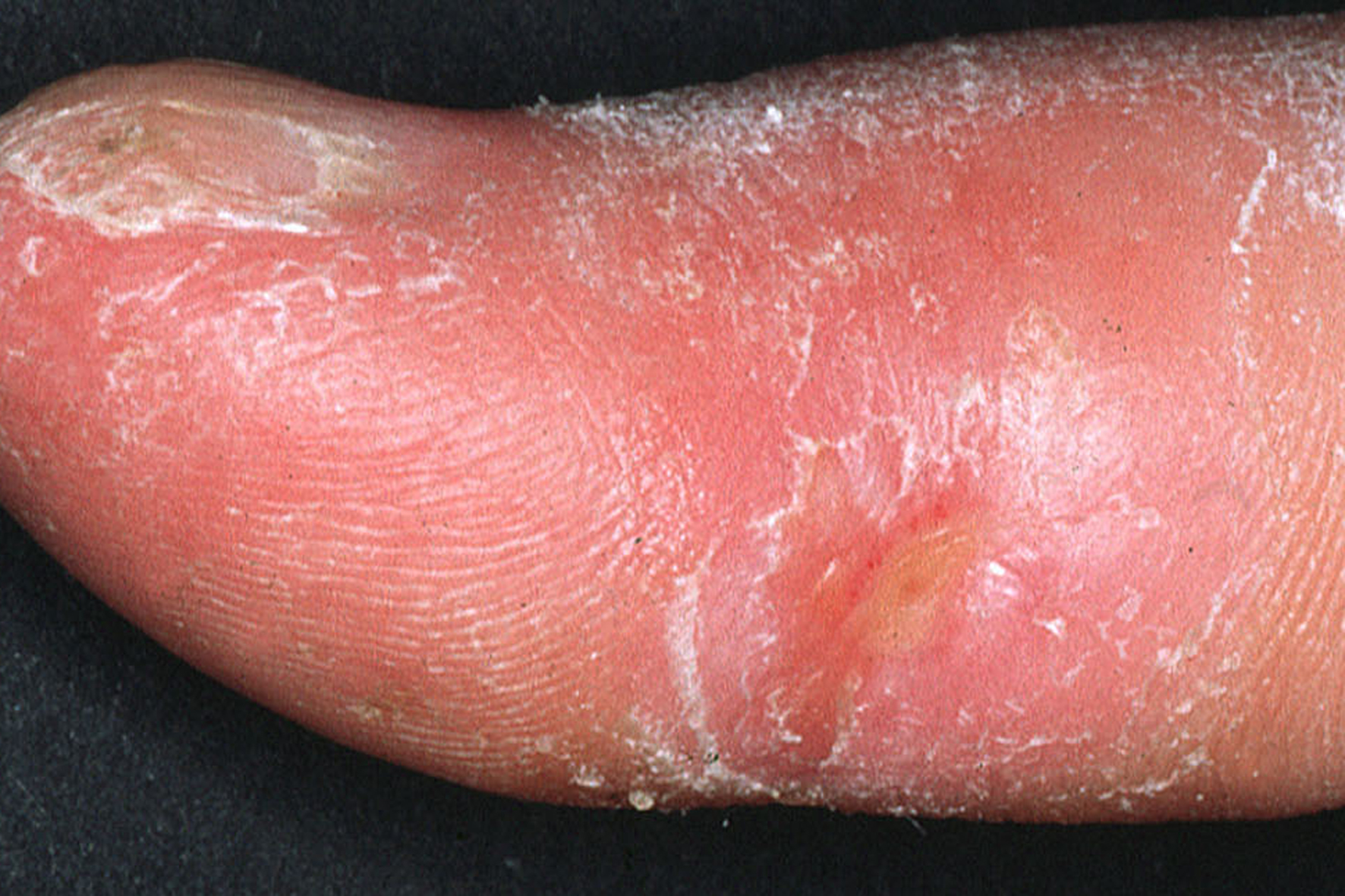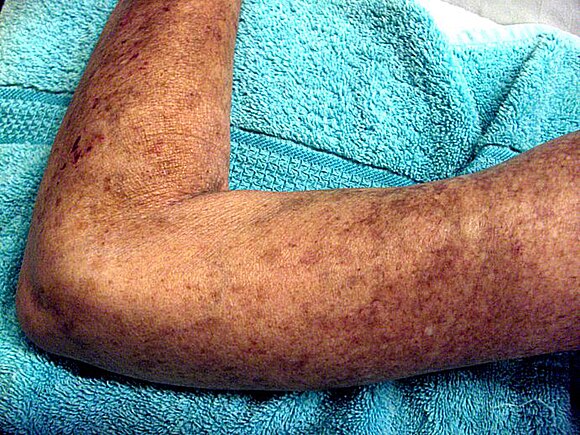Scleroderma, also known as systemic sclerosis, is a rare and chronic autoimmune disease that affects the skin and internal organs. One of its subtypes, Crest Syndrome, stands for Calcinosis, Raynaud’s phenomenon, Esophageal dysfunction, Sclerodactyly, and Telangiectasia. This article provides an in-depth look at this condition, including its symptoms, causes, and care strategies.

What is Scleroderma?
Scleroderma is a complex disease characterized by the hardening and tightening of the skin and connective tissues. It occurs when the immune system mistakenly attacks healthy body tissue, leading to excessive production of collagen. Collagen is a protein that provides structure to the skin, blood vessels, and organs. When too much collagen builds up, it can cause scarring and thickening of tissues, which interferes with their normal function.
This condition can range from mild to severe and may affect only the skin or involve multiple organs, such as the heart, lungs, kidneys, and digestive system. While there is no cure for scleroderma, early diagnosis and proper management can significantly improve quality of life.
Types of Scleroderma
There are two main types of scleroderma:
- Localized Scleroderma: This type primarily affects the skin and underlying tissues. It is less severe and does not usually impact internal organs. Localized scleroderma often appears as patches of thickened skin or linear streaks.
- Systemic Scleroderma: This form is more serious and involves multiple systems in the body. It includes limited scleroderma, which is associated with Crest Syndrome, and diffuse scleroderma, which progresses more rapidly and affects larger areas of the skin and internal organs.
Symptoms of Scleroderma
The symptoms of scleroderma vary depending on the type and severity of the disease. Some common signs include:
Skin Changes
- Thickening and hardening of the skin, especially on the fingers, hands, and face.
- Shiny, tight skin that may restrict movement.
- Patches of discolored skin, ranging from red to white.
Raynaud’s Phenomenon
This condition causes the small blood vessels in the fingers and toes to constrict in response to cold or stress, leading to color changes in the skin. The affected areas may turn white, then blue, and finally red as blood flow returns. Raynaud’s phenomenon is one of the earliest signs of scleroderma and is often present in people with Crest Syndrome.
Digestive Issues
- Difficulty swallowing due to esophageal dysfunction.
- Heartburn and acid reflux caused by weakened muscles in the esophagus.
- Bloating, diarrhea, or constipation resulting from slowed movement in the intestines.
Calcinosis
Calcinosis refers to the formation of calcium deposits under the skin, typically around the fingers, elbows, or knees. These deposits can cause pain and may break through the skin, leading to infections.
Telangiectasia
Telangiectasia appears as small, dilated blood vessels near the surface of the skin, often on the face and hands. These tiny red spots are harmless but can be cosmetically concerning for some individuals.
Other Symptoms
- Joint pain and stiffness.
- Muscle weakness.
- Shortness of breath and dry cough due to lung involvement.
- High blood pressure and kidney problems.
Causes of Scleroderma
The exact cause of scleroderma remains unknown, but researchers believe it results from a combination of genetic and environmental factors. Here are some potential contributors:
Autoimmune Response
In scleroderma, the immune system mistakenly targets healthy tissues, triggering inflammation and overproduction of collagen. This abnormal immune response is central to the development of the disease.
Genetic Predisposition
While scleroderma is not directly inherited, certain genes may increase susceptibility to the condition. Family history of autoimmune diseases can raise the risk of developing scleroderma.
Environmental Triggers
Exposure to certain chemicals, toxins, or infections may trigger scleroderma in genetically predisposed individuals. For example, silica dust and organic solvents have been linked to an increased risk of the disease.
Hormonal Factors
Scleroderma is more common in women than men, suggesting that hormones may play a role in its development. Estrogen, in particular, has been studied for its potential influence on the immune system.
Diagnosis of Scleroderma
Diagnosing scleroderma can be challenging because its symptoms overlap with those of other conditions. A thorough evaluation by a healthcare provider is essential and may include:
- A detailed medical history and physical examination.
- Blood tests to check for specific antibodies associated with scleroderma.
- Imaging studies, such as X-rays, CT scans, or MRIs, to assess organ involvement.
- Skin biopsy to examine tissue samples under a microscope.
- Pulmonary function tests to evaluate lung health.
Treatment and Care for Scleroderma
Although there is no cure for scleroderma, treatment focuses on managing symptoms, preventing complications, and improving overall well-being. A multidisciplinary approach involving various specialists is often necessary.
Medications
- Immunosuppressants: These drugs help suppress the overactive immune response and reduce inflammation.
- Vasodilators: Medications like calcium channel blockers can improve blood flow and relieve symptoms of Raynaud’s phenomenon.
- Antacids and Proton Pump Inhibitors: These medications address digestive issues such as heartburn and acid reflux.
- Pain Relievers: Over-the-counter or prescription pain medications may be used to manage joint and muscle pain.
Lifestyle Modifications
- Avoid exposure to cold temperatures to minimize Raynaud’s symptoms.
- Exercise regularly to maintain flexibility and strengthen muscles.
- Eat a balanced diet rich in fruits, vegetables, and whole grains to support overall health.
- Quit smoking, as it worsens vascular symptoms and increases the risk of complications.
Physical and Occupational Therapy
Therapy can help individuals cope with physical limitations caused by scleroderma. Techniques such as stretching exercises, massage, and adaptive tools can improve mobility and daily functioning.
Emotional Support
Living with scleroderma can be emotionally challenging. Counseling, support groups, and mindfulness practices like meditation can provide valuable coping strategies and foster a sense of community.
Monitoring and Managing Complications
Regular follow-up appointments with healthcare providers are crucial to monitor disease progression and detect complications early. Special attention should be given to:
- Lung function to prevent pulmonary fibrosis or hypertension.
- Kidney health to avoid renal crisis, a serious complication of scleroderma.
- Heart health to identify any cardiac involvement.
Research and Advances in Scleroderma
Ongoing research aims to better understand the underlying mechanisms of scleroderma and develop new treatments. Clinical trials are exploring innovative therapies, including biologic agents and stem cell transplants, which hold promise for slowing disease progression and improving outcomes.
Additionally, advancements in imaging technology and biomarker identification are enhancing diagnostic accuracy and enabling personalized treatment plans tailored to individual patients.
Living with Scleroderma
Managing scleroderma requires a proactive approach and collaboration between patients and healthcare providers. Education about the disease empowers individuals to make informed decisions about their care. By adopting healthy habits, seeking timely medical intervention, and staying connected with support networks, people with scleroderma can lead fulfilling lives despite the challenges posed by the condition.





